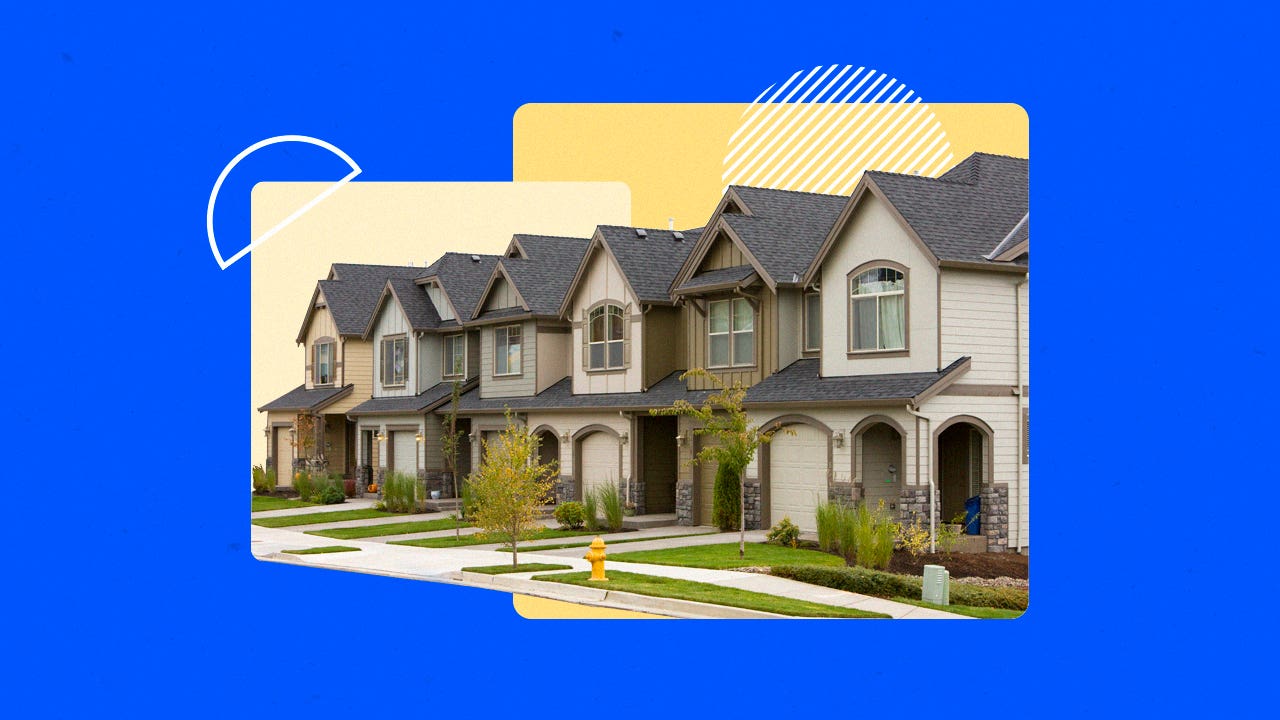Cheapest housing markets in the U.S.

Buying a home these days may seem like a difficult task. Inflation, high mortgage rates and higher home prices are pinching would-be homebuyers on affordability nationwide.
But in some parts of the country, you can get more for your dollar — a lot more. If you’re able to relocate or work remotely, it may be worth considering a move to an area where homeownership is more affordable. Let’s take a deeper look at the cheapest places to buy a house in the U.S.
Key housing market data
In the past 20 years, wages have not kept pace with home prices. The median household income increased by only $6,005 between 2001 and 2021, from $64,779 to $70,784, and median home sale prices increased by more than $250,000 in that same time frame, according to data from the St. Louis Fed. Comparing the data from 2014 to the most current numbers available in 2024 makes it easy to see why homebuyers are feeling the pinch:
| 2014 | 2024 | Increase | |
|---|---|---|---|
| Median household income | $61,468 | $80,610 | +$19,142 (+31.14%) |
| Median home price | $285,775 | $419,550 | +$133,775 (+46.81%) |
| Average 30-year fixed mortgage rate | 4.3% | 6.32% (as of Sept. 11, 2024) | +2.02 |
| Typical mortgage payment* | $1,131 | $2,082 | +$951 (+84.08%) |
|
Sources: U.S. Census Bureau, Freddie Mac, St. Louis Fed and Bankrate. 2024 numbers reflect the most recent data available. *Calculated using median home price and average 30-year fixed rate, assuming a 20 percent down payment, not including taxes and insurance. | |||
The typical mortgage payment increased by 84 percent in the last 10 years, while income has only increased by 31 percent. It makes perfect sense, then, that the country’s most affordable housing markets are seeing growth.
Cheapest housing markets in the U.S.
A lot of factors go into whether a city is right for you. Cost is certainly a major component, but so is opportunity. “It’s important to compare the cost of living to the quality of life that the area and community provides,” says Aaron Robbins, an executive broker with Realty Executives of Hickory in Hickory, North Carolina. He adds that, while cheap housing costs have their place in the equation, “so do the local wages, the amenities nearby and the tax rates.”
This list represents the 10 cheapest cities in the U.S. to buy a house in, per a Realtor.com study from the fourth quarter of 2023. Beyond just low listing prices, each city has its own individual personality and culture. If you’re looking for an affordable place to call home, look no further.
1. Toledo, OH
- Median list price: $205,725
- 20% down payment: $41,145
- Median household income: $46,302
Topping the list is Toledo, which sits close to the Ohio/Michigan border on Lake Erie. The fourth most populous city in Ohio, Toledo is a classic example of a former industrial city that’s turning a corner. Several Fortune 500 companies have headquarters in the metro area, including Owens Corning. But it’s not all about work — Toledo also boasts a bustling art scene, a highly rated zoo and aquarium and more than 12,000 acres of parks.
2. Scranton, PA
- Median list price: $239,495
- 20% down payment: $47,899
- Median household income: $41,601
Scranton — notably the home of fictional TV series “The Office” and real-life president Joe Biden — is in northeastern Pennsylvania. While it was a heavy coal-producing town in the early 20th century, the city is currently going through a major restoration, with many historic buildings being redeveloped, and Census numbers show the population is growing. The city’s Montage Mountain ski resort is popular for winter sports, while also offering year-round fun with outdoor festivals and big-name concerts.
3. Rochester, NY
- Median list price: $249,949
- 20% down payment: $49,990
- Median household income: $48,618
Rochester is located in northern New York state, on the southern shore of Lake Ontario. As part of the country’s Rust Belt, this city’s history is steeped in industry, including major companies like Eastman Kodak and Xerox. Today, its largest employers include the University of Rochester, and it’s also home to the prestigious Rochester Institute of Technology. In addition, the city is just a short drive from New York’s gorgeous Finger Lakes region..
4. Detroit, MI
- Median list price: $252,250
- 20% down payment: $50,450
- Median household income: $38,080
Motown, Motor City, Detroit Rock City — these are just a few names for one of the midwest’s best comeback stories. Once one of the largest cities in the U.S., Detroit saw its population decline in the latter half of the 20th century, with the city declaring bankruptcy in 2013. However, since then it has seen a lot of revitalization. Along with the automotive companies, the metro area is also home to major mortgage lenders Rocket Mortgage and UWM. It’s also the only city on this list to have four major league pro sports teams.
5. St. Louis, MO
- Median list price: $277,000
- 20% down payment: $55,400
- Median household income: $56,245
St. Louis — “the Gateway to the West” — is the largest metro area in Missouri. Due to its location on the Mississippi River, the city has been a hub for shipping and economic activity. Today, it’s home to a major healthcare sector, several universities and corporate presences for name-brand companies like Boeing, Purina and Anheuser-Busch. The city also has a deep musical history.
6. McAllen, TX
- Median list price: $280,000
- 20% down payment: $56,000
- Median household income: $60,200
McAllen is a city of 142,210 at the southern tip of Texas, just over the border from Reynosa, Mexico and not far from the Gulf Coast. While originally an agricultural area, the past few decades has seen it grow into a thriving city with a growing economy. In addition, McAllen consistently ranks as one of the safest cities in Texas.
7. Birmingham, AL
- Median list price: $294,825
- 20% down payment: $58,965
- Median household income: $44,951
Birmingham is Alabama’s second most populous city with just over 200,000 people in the city limits. While it has a history of industrial steel and coal, it is now home to large banking and healthcare companies. Also known as “the Magic City,” Birmingham boasts a campus of the University of Alabama (UAB) and several large museums, and it hosts many cultural festivals.
8. Little Rock, AR
- Median list price: $295,000
- 20% down payment: $59,000
- Median household income: $59,762
Situated on the Arkansas River, Little Rock is the state’s capital and its most populous city. It’s an economic hub of the South, with Simmons Bank, Bank of the Ozarks and the financial brokerage Stephens Inc. all headquartered there. The city is also home to a University of Arkansas campus, the Wildwood Park for the Arts and the William J. Clinton Presidential Library and Museum.
9. Wichita, KS
- Median list price: $298,950
- 20% down payment: $59,790
- Median household income: $61,281
Wichita is the largest city in Kansas. The Arkansas River and the Little Arkansas River converge at the city’s center, which sets the stage for many attractions, including the gorgeous Botanica gardens, the Wichita Art Museum and the Keeper of the Plains, an imposing 44-foot statue created by Native American Blackbear Bosin. The city hosts several events in the summer, with many venues for live music.
10. Baton Rouge, LA
- Median list price: $301,954
- 20% down payment: $60,391
- Median household income: $41,651
While New Orleans may get most of the attention in Louisiana, Baton Rouge — home to Louisiana State University — has its own appeal. Due to its position on the Mississippi River, it has a history of trade, manufacturing and industry; it’s currently home to one of the country’s largest oil refineries. Like New Orleans, the city is known for its Mardi Gras festivities, Cajun- and Creole-influenced cuisine and vibrant culture.
Other affordable housing options
Ready for homeownership? While moving to a cheaper city will help save on costs, there are many other housing options beyond the traditional single-family home that can help you set down roots for less:
- Attached properties: If a detached single-family home isn’t within your budget, a condo or townhouse might be. With this sort of multi-family property, you own the unit itself but typically share the costs of common areas within the building or community. Condos and townhouses usually cost less and require significantly less maintenance than freestanding homes in the same area.
- Manufactured homes: Manufactured homes have increased in quality significantly over the last few decades. They averaged $108,100 in 2021, according to data from the Census Bureau, and they can be placed almost anywhere: You can buy your own land or rent a lot in a manufactured-home community.
- Prefab/modular homes: If you’re considering building a house, these options can be a cheaper, faster way to go. In contrast to traditionally built residences, here some level of construction takes place offsite. Then, either major components or entire sections are trucked to the lot for assembly. Building a modular home costs an average of $270,000, according to HomeAdvisor — not counting the cost of land.
- Tiny homes: As the name implies, tiny homes are extremely small residences — typically 400 square feet or less — that are carefully designed to make the most of their small footprint. And since size does matter, they cost significantly less to purchase, ranging up to $180,000 on the high end. You can purchase land to put them on, erect them on a friend or relative’s land, or rent a small parcel of property.
FAQs
You may also like

‘We buy houses’ companies in Washington state

What does it cost to own a home in 2025?




